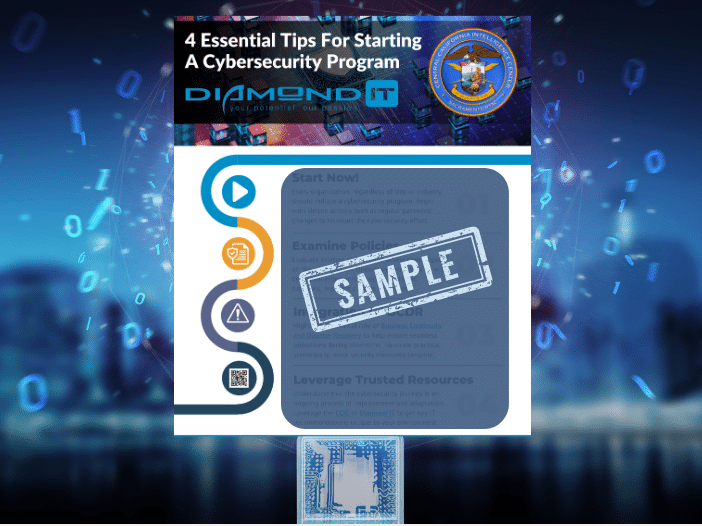
In an era dominated by digital connectivity, the significance of a robust cybersecurity program cannot be overstated. Recent statistics shed light on this pressing landscape, underscoring the imperative for organizations to fortify their defenses. Bill Kizer, Cyber Intelligence Analyst from the Department of Homeland Security and Central California Intelligence Center (CCIC) offers expert insights and actionable steps in our free guide on “Tips For Starting A Cybersecurity Program.” You can also watch this video of Bill to learn more.

Step #1: Launch Your Cybersecurity Program – Respond To Escalating Threats
In the past year alone, cyberattacks have surged by a staggering 67%. The first and paramount tip is to embark on your cybersecurity journey immediately. Foundational steps, like enforcing regular password changes, become essential in building a resilient security posture.
Step #2: Tailor Your Cybersecurity Policy for Precision – Customization Matters
Small businesses, comprising 43% of cyberattack targets, highlights the need for a tailored cybersecurity policy. Recognizing that one size does not fit all, we delve into the nuances of customization. For instance, while robust passwords are fundamental, imposing a universal policy, such as a 16-character password, may not align with the practical needs of every sector.
Consider law enforcement scenarios where time is critical, and officers face emergencies. Enforcing a strict 16-character password policy in patrol cars could impede response times. Tailoring policies to the unique challenges of each sector ensures a harmonious balance between security and practicality.
Step #3: Strategic Cybersecurity Policy Evolution – Understand Implications
Ransomware attacks witnessed an alarming 350% increase. A crucial facet of fortifying defenses is a comprehensive review of existing policies. Understanding how these policies impact various organizational facets is vital. This ensures a seamless and effective cybersecurity program that dynamically evolves in response to emerging threats.
Step #4: Two-Pronged Preparedness – Disaster Recovery and Business Continuity
A staggering 60% of small companies facing a cyberattack go out of business within six months. Acknowledging the inevitability of cyber disasters necessitates a two-pronged approach — Disaster Recovery and Business Continuity. Beyond recovery, plan for maintaining critical operations during disruptions. Consider practical scenarios, such as handling encrypted payroll during an attack, ensuring practical preparedness in the face of evolving threats.
How Diamond IT Can Help
As cyber threats continue to evolve, these actionable steps, complemented by recent cybersecurity statistics, emphasize the critical need for organizations to proactively establish and continually refine their cybersecurity programs. The message is clear — during Cybersecurity Awareness Month and every month – focus on your cyber resilience. Contact us to learn more.
